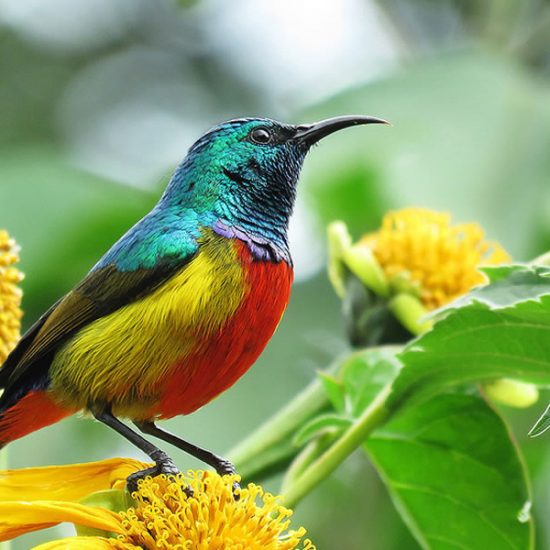Omukama Cwa II Kabalega – A Pioneer in Environmental Conservation
Omukama Cwa II Kabalega, the ruler of the Kingdom of Bunyoro-Kitara from 1870 to 1899, is renowned for his profound impact on his kingdom’s political and social landscape. However, his contributions to environmental conservation, though less frequently highlighted, are equally significant and reflect an advanced understanding of sustainable stewardship that was ahead of his time.
The Historical Context
In the late 19th century, the Kingdom of Bunyoro-Kitara, located in what is now western Uganda, was a region of rich biodiversity and natural resources. Omukama Cwa II Kabalega ascended to the throne during a period of significant external pressure and internal challenges, including the encroachment of colonial powers. Amidst these turbulent times, Kabalega’s governance was marked by an unusual emphasis on the preservation of the environment and natural resources, a testament to his visionary leadership.
Environmental Stewardship and Forest Conservation
One of Kabalega’s most notable contributions to environmental conservation was his commitment to preserving the kingdom’s vast forests. During his reign, Bunyoro-Kitara was known for its lush woodlands, which were not only vital for the local climate but also provided resources essential for the kingdom’s sustenance and spiritual practices.
Among many others, one of the famous landmarks of his conservation efforts to date is the Royal Mile found in the 793 km2 Budongo Forest Reserve lying at the edge of the Albertine Rift and attached to Murchison Falls National Park. It is a historical one (1) mile-long straight stretch site in Budongo Forest planted by Omukama Cwa II Kabalega during his reign. It served as a traditional medicinal hub, a military training ground, and a cover for his military forces (Abarusuura). Now a national protected forest area, and famous for bird watching and chimpanze tracking, the forest serves as a home to a variety of sought-after species and hosts thousands of tourists every year.

Along the Royal Mile, tourists from around the world get a chance to see rare and endangered bird and mammals species .
Kabalega established regulations to prevent the overexploitation of these forests. He recognized that deforestation could lead to adverse environmental changes, including soil erosion and the loss of wildlife habitats. Under his rule, specific areas were designated as protected forests, where logging and hunting were restricted. This early form of conservation ensured the forests’ sustainability and maintained their role as crucial ecological and medicinal resources.
Water Resources Management
Kabalega also understood the importance of managing water resources effectively. His kingdom was crisscrossed by several rivers and lakes, which were essential for agriculture, transportation, and daily life. To safeguard these water sources, Kabalega implemented practices that prevented pollution and overuse. He promoted the construction of water catchment systems and regulated agricultural practices near water bodies to minimize runoff and soil erosion.
These measures not only helped in sustaining the kingdom’s agricultural productivity but also ensured the long-term availability of clean water for his people. Kabalega’s policies reflect an early awareness of the interdependence between human activities and water ecosystems, a principle that remains crucial in modern environmental conservation efforts.
Wildlife Protection and Cultural Significance
Kabalega’s environmental stewardship extended to wildlife protection as well. The forests of Bunyoro-Kitara were home to a diverse array of species, some of which held cultural and spiritual significance for the kingdom’s people. Kabalega’s conservation efforts included measures to protect these species from excessive hunting and habitat destruction. This not only preserved the ecological balance but also maintained the cultural heritage tied to these animals.

Chimpanzees in Budongo Forest Reserve.
The respect for wildlife was ingrained in the cultural practices of the Bunyoro-Kitara people, and Kabalega’s efforts helped reinforce these values. By integrating environmental conservation with cultural traditions, he ensured that his people appreciated the intrinsic value of nature and its preservation.
Legacy and Modern Relevance
Omukama Cwa II Kabalega’s contributions to environmental conservation were pioneering and prescient. His emphasis on forest protection, water resource management, and wildlife preservation demonstrated a sophisticated understanding of ecological principles. His policies laid the groundwork for sustainable management practices that would be recognized and valued in contemporary environmental discourse.
In the modern context, Kabalega’s legacy serves as a powerful reminder of the deep-rooted connection between environmental stewardship and cultural heritage. His reign exemplifies how traditional leadership can harmonize with conservation principles, offering valuable lessons for contemporary environmental challenges.
Omukama Cwa II Kabalega’s impact on environmental conservation is a significant aspect of his legacy. His forward-thinking policies ensured the preservation of Bunyoro-Kitara’s natural resources and highlighted the importance of integrating environmental stewardship with cultural values. As we navigate today’s environmental challenges, Kabalega’s contributions remind us of the timeless wisdom that can be drawn from historical practices and indigenous knowledge in our quest for sustainable development.
In recognition and continuation of his conservation efforts, Kabalega Foundation, in partnership with Bunyoro-Kitara Kingdom is organising the 2nd edition of Kabalega Independence Run under the theme; “Run to celebrate a hero’s legacy, Run for a Green Future”, to be held on the 05th of October, 2024 at Hoima Booma Grounds, proceeds of which will go towards environmental conservation initiatives.
#KabalegaIndependenceRun2024 | #KabalegaRun2024 | #Kabalega | #KIR2024
